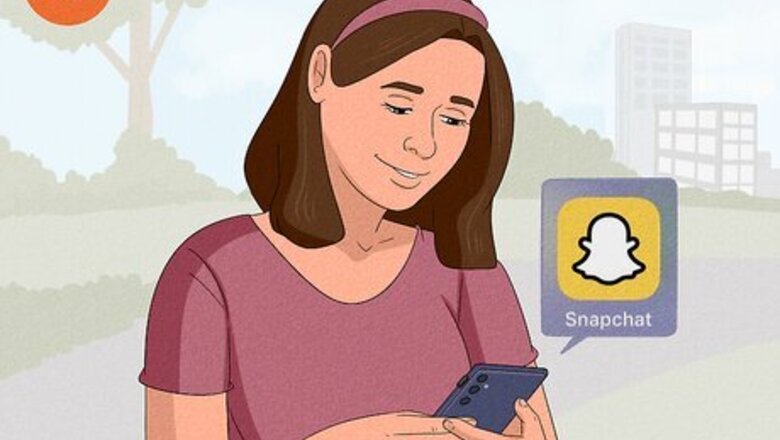
views
Is Snapchat safe for kids and teens?

Snapchat has some risks but is mostly safe for kids 16 and older. Common Sense Media, a leading nonprofit organization that rates media for teens, has rated Snapchat as appropriate for teens that are 16 or older since it’s expected that they have the maturity to understand and navigate the risks of the app. While Snapchat has lots of fun features that make it an appealing creative and social outlet for kids, there are potential risks to keep in mind before deciding if you should let your child use Snapchat: Time wasting and app addiction caused by the “countdown” element of Snap Streaks and stories that make kids feel like they have to check in on the app constantly. Misleading disappearing messages that make kids and teens feel like the app is safe when, in reality, any online content can be saved, shared, and potentially stay online forever. Social media pressure to maintain a certain image or persona online that can cause insecurity and anxiety about personal appearance and social status. Cyberbullying between other kids on the app, which is unfortunately common on every social media app. Exposure to inappropriate content in the Discover section or messaging, as well as advertising and marketing data collection. Privacy and safety issues with Snap Map location sharing, third-party data collection, the ability to screenshot Snaps, and features like Spotlight and Memories that allow kids to save Snaps. Online predators who may use the app to connect with or engage in inappropriate behavior with minors.
Understanding Snapchat Features & Their Risks

Filters and lenses One of the defining features of Snapchat is the filters and lenses that add color gradients, texts, images, and even AI designs on top of the user's face. These filters can alter the user’s facial structure, skin tone, body shape, and more. Augmented Reality (AR) filters can also add fake backgrounds to photos or transform the user into a different age or species. Potential Risks: Snapchat filters can be silly and fun, but they can also exacerbate body image or dysmorphia issues. The filters that change a person’s body shape or facial features are sometimes used to appear more conventionally attractive on the app, which can warp young users’ idea of what they “should” look like.

Snapstreaks Snapstreaks keeps track of how many days in a row that two users have sent direct messages to each other. From the app’s perspective, Snapstreaks encourage engagement and competition, driving young users to use the app at least once a day. Potential Risks: Snapstreaks aren’t particularly harmful, but they are designed to keep users engaged and even addicted to the app. Some users take their “streaks” very seriously, even going so far as to give their friends their login information if they can’t keep up their streaks for whatever reason.
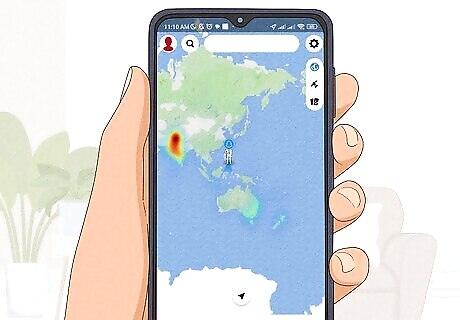
Snap Map The Snap Map allows users to share their physical location with friends on a virtual map. Essentially, your child’s Snapchat friends can know the location of their phone at all times. The location can also be shared as a public Snapchat story if set as such by the user, which can send the location to Snapchat users outside their contact list. Potential Risks: The location sharing is sometimes precise enough that users can see the street or building that the sharer is in. This information could expose them to stalking or otherwise malicious and inappropriate behavior. Snapchat offers a feature called “Ghost Mode,” which prohibits location sharing and disallows the Snap Map feature.
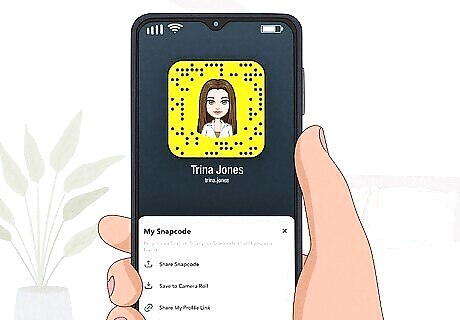
Snapcode A Snapcode is a unique QR code that each user has. To add friends on the app, one user can simply take a picture of the other person’s code and automatically be added to their friends list. Potential Risks: Snapcode makes it really easy for users to add anyone as a friend, meaning that some kids and teens may have virtual strangers on their friends list. When they share their location or content online, their personal information may be shared with people they hardly know or trust.
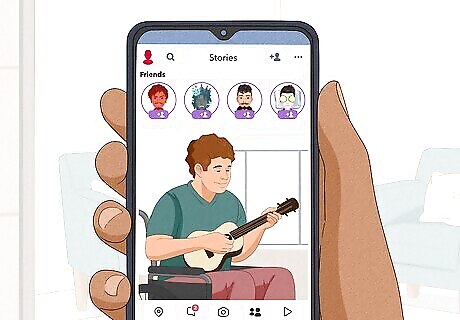
Snapchat Stories A Snapchat story is a photo, text, or video post that’s shared with all of a user’s contacts for up to 24 hours. Snapchat users who have signed up for an account with a birth date that claims they’re 18 or older can post public stories, meaning any Snapchat user around the globe can use it. Snapchat also offers “After Dark Stories,” which can only be posted between 8:00 pm and 5:00 am, which may encourage the posting of mature or suggestive content. Potential Risks: Posting stories may increase the chance that a user’s content gets screenshotted. Posting a public story may allow strangers to see where the poster lives or initiate potentially inappropriate communication with them. The After Dark Stories can also expose kids to age-inappropriate content.
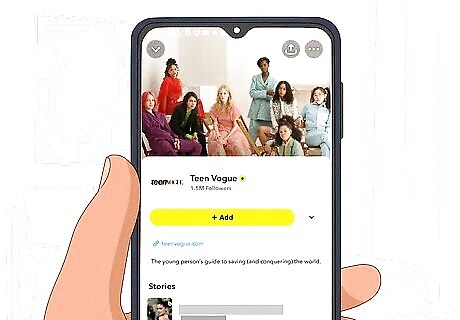
Our Stories & Publisher Stories Our Stories and Publisher Stories curate stories from large media organizations (e.g., Teen Vogue, Cosmopolitan) and brands or websites. These stories may target impressionable young demographics and promote product launches directly to teens. Potential Risks: While these advertisements can be harmful in encouraging teens to buy certain products or foster certain insecurities, they can also help companies build profiles for future ad tracking.
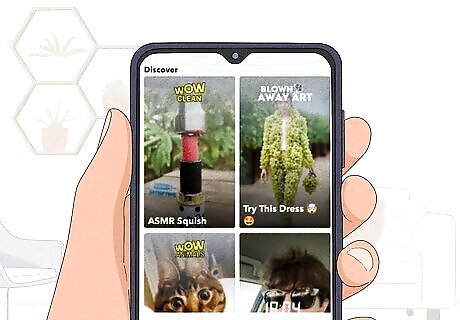
Snapchat Discover Snapchat Discover is a scrollable “news feed” where users can view the Stories of friends, celebrities, influencers, brands, entertainment organizations, and more. Similar to TikTok, the media on this page comes in the form of short videos or pictures of custom content. Potential Risks: Snapchat Discover could expose your child to pieces of media that you might not want them to be seeing. Snapchat does have moderation rules and has made attempts to tighten content guidelines on the Discover page, but inappropriate or harmful content may still surface.
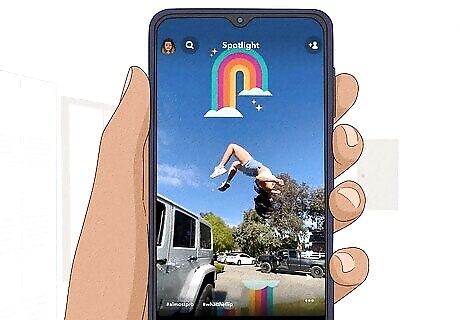
Spotlight The Spotlight feature allows users who claim to be 18 or older to post vertical video content that lasts 24 hours and is shared with other users. Similar to TikTok, Spotlight users can earn more money and attention to their profile for more interactions and views on their videos. Potential Risks: Due to the financial incentive of Spotlight, younger users could lie about their age and potentially post inappropriate videos for the sake of attention or a desire to go viral.
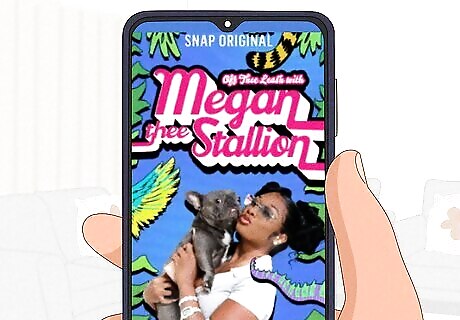
Snap Originals Snap Originals are mini TV programs produced exclusively for the Snapchat platform. These series include multiple five-minute-long episodes that range across various genres and often feature notable celebrities and influencers. Potential Risks: While Snap originals are mostly harmless, they may feature certain content that may be harmful to or age-inappropriate for younger kids.
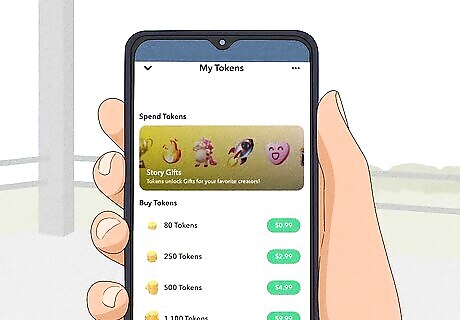
Snap Tokens Snap Tokens are a type of monetary currency used within the app to purchase digital goods or play Snapchat games. These tokens are purchased with real money and can be given as gifts to content creators, who can then convert their tokens into real cash. Potential Risks: Snap Tokens could lead to reckless spending of money for kids with access to a credit or debit card. This system can also lead to teens forging parasocial bonds with creators or feeling addicted to the app because they want to play more games and unlock more tokens.
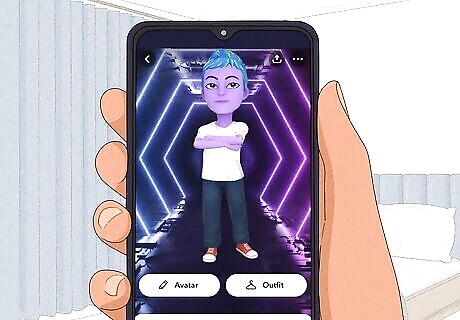
My AI My AI is a Snapchat chatbot that’s driven by Artificial Intelligence. The AI user can be chatted with, competed against in games, or asked questions. The AI assistant is powered by ChatGPT and appears in every user’s contact list as one of their “friends.” Potential Risks: My AI has historically targeted teens and sometimes recommends dangerous or illegal activities. While Snapchat is working to amend the ethical issues around My AI, the power and potential dangers of AI for young people is still unclear. You can disable My AI by opening Snapchat and going to your child’s profile. Tap Settings → Account Actions → Clear My AI Data → Confirm.
How to Protect Your Child on Snapchat
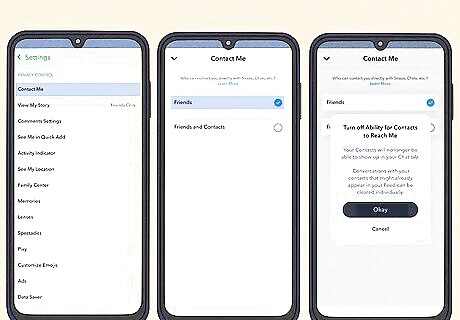
Manage your child’s privacy settings and disable risky features. Ask your child to set their account to “Private” so only their approved contact list can view their content and send them messages. Then, take steps to disable any features that could compromise their safety and wellbeing, such as: Blocking Messages from Strangers: Open your child’s Snapchat profile, then select Settings → Privacy Control → Contact Me → Friends → Okay. Blocking Recommended Contacts: Open your child’s Snapchat profile, then select Settings → Privacy Control → See me in Quick Add → uncheck Show me in Quick Add. Disabling Location Sharing: Open your child’s Snapchat profile, then select Settings → Privacy Control → See My Location → toggle on Ghost Mode → tap Until Turned Off. Disabling Phone Number Sharing: Open your child’s Snapchat profile, then select Settings → My Account → Mobile Number → uncheck Let others find me using my mobile number.

Monitor your child’s Snapchat activity through the app’s Family Center. Parents and families can keep an eye on what children are doing through the parental controls in Snapchat’s Family Center. In the Family Center, you can change privacy settings on your child’s app, monitor inappropriate Snapchat use, and submit confidential reports. Follow these steps to register for Family Center: Download Snapchat and register for an account. Add your child or teen as a friend by searching for their username. Open Family Center in your account settings. Follow the setup prompts. Once you reach the invite screen, select your child’s username from your contacts and tap Send Invitation. If you do see that your child is participating in concerning content or interactions on Snapchat, have a compassionate conversation with them. If your child doesn’t stop their behavior, it may be worth restricting their access to the app or their entire phone.
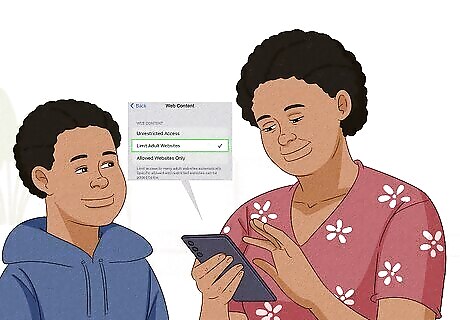
Place parental controls on your child’s phone. Some phone manufacturers and carriers offer parental controls to limit a child’s access to certain apps, including Snapchat. Reach out to the company that makes your child’s phone or services their mobile data to explore your options for limiting or blocking Snapchat.
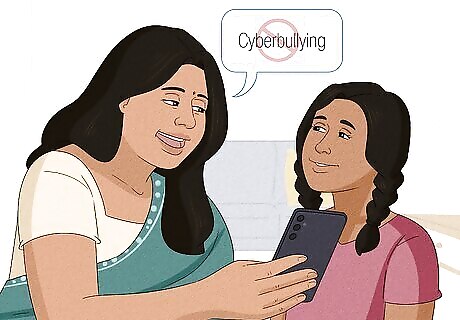
Talk to your child about appropriate app use and content sharing. Have a conversation about what type of messages, photos, and other content is appropriate to send and receive on Snapchat. Be as specific as possible as you tell them how to stay safe on Snapchat—for example, you might tell them that nudity and cyberbullying are inappropriate types of content to share and engage in. Along with placing parental controls and disabling features on your child’s phone, it’s crucial to educate them on how they can responsibly (and safely use) their apps. Otherwise, they’re likely to just bypass your safety modifications without understanding the risks.
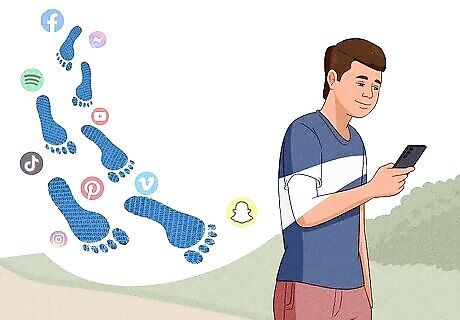
Discuss digital literacy issues like digital footprint and stranger danger. With children growing up in an age of rampant digital technology, it’s vital that they understand the risks of using the internet. Remind your child to think before they post and that it’s nearly impossible to permanently delete something from the internet—even celebrities struggle to completely scrub the internet of unwanted photos! Also, make sure your child understands that they should not add or accept friend requests from people they do not know. Be clear that meeting up with someone they’ve only met online can be extremely dangerous, no matter how trustworthy they believe this person to be. Along with stranger danger, educate them on how risky it can be to share their location online. If they still choose to share their location at all, it should only be with very close and trusted friends.
Keep Your Kids Safe on Social Media with Troomi
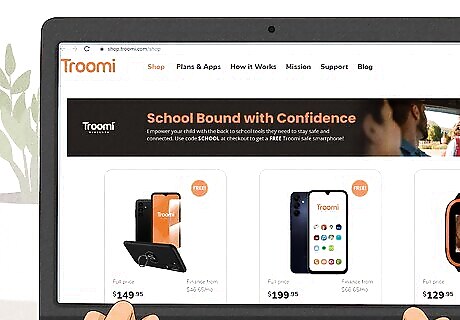
Protect your child from the risks of social media with a Troomi phone. Troomi is a company that’s intent on keeping kids safe through offering special phones with built-in parental controls. Your kid can still have a phone with all of the benefits, but the phone won’t have any social media apps, addictive games, potential predators, harmful media, or unwanted callers. Instead, a Troomi phone offers the following features to keep kids both safe and happy while using technology: Active GPS tracking: Track your child through the Parent Portal with real-time updates on your child’s location, battery power, and signal level. Content alerts for parents: Get content alerts for flagged text, images, or emojis—and customize your alerts to give your child an appropriate level of independence. Remote text monitoring: View your child’s texting interface from afar, just as it appears on their phone. Automatic content filtering: Customize what content and online resources you want to be available for your child. Only approved contacts: Use Troomi’s Safelisting™ feature to control what numbers can call your child’s phone. Timeframes for allowed app use: Control the time windows in which your child can use certain apps. Curated app libraries: Select from apps in the Parent Portal that have been selected for child safety and education. No harmful social media apps: The Troomi phone doesn’t allow installation of any harmful apps (including Snapchat). If you’re interested in providing your child with a safe and risk-free phone, Troomi is happy to provide you with $50 off by using the promo code WIKI50.
Frequently Asked Questions About Snapchat Safety

How old do you have to be to use Snapchat? You must be 13 years old to use Snapchat, according to their terms of service. When you sign up for Snapchat, you must enter your birthdate to set up your account. However, there’s no official age verification, meaning that it’s very easy for kids under 13 to sign up for an account.
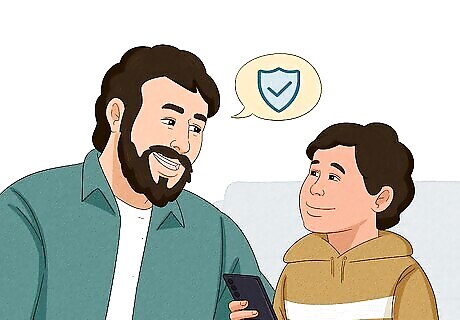
Should I let my kid use Snapchat? Whether you should allow your kid to get Snapchat is largely based on your philosophies as a parent, as well as the maturity level of your child. Educate yourself on the risks and dangers of Snapchat, and consider whether your child is responsible about online privacy and safety. Keep in mind that Snapchat can be beneficial for kids who have the emotional maturity to handle social media apps. For example, letting your child have Snapchat can help them learn social media responsibility and not feel excluded from their social group. If you’re on the fence, talk to your child about your concerns about the app and see how they handle a discussion about internet safety and digital literacy.
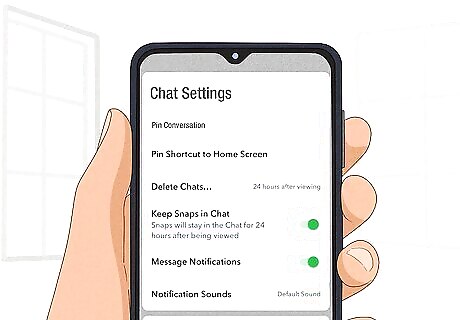
Do messages really disappear on Snapchat? Yes, most messages on Snapchat are made to be deleted instantly after being viewed or after they’ve expired. However, chat messages won’t be deleted if someone saves, replies, or reacts to them. Users can also send snaps in one-on-one or group chats and set them to delete after 24 hours instead of immediately. However, there may be workarounds to the disappearing messages. While the message will disappear on the app itself, users can screenshot snaps—although the sender should get a notification that their photo or messages have been screenshotted.
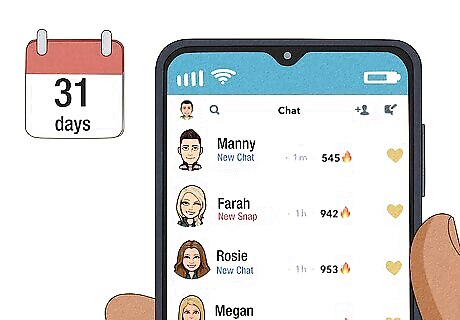
Can my child retrieve Snaps after they’ve disappeared? According to Snapchat, opened or expired Snaps can typically not be retrieved from Snapchat’s servers after they’ve been deleted from the app. Most of the time, opened Snaps are automatically deleted after they’ve been viewed or after 24 hours. Unopened Snaps between two users will automatically be deleted after 31 days. However, nothing really disappears from the internet. Someone with extensive technological or hacking experience may be able to recover “deleted” snaps.

What is the "My Eyes Only" feature, and is it safe? The “My Eyes Only” feature on Snapchat allows users to encrypt certain Snaps and Stories with a password. This feature is typically used for photos that only the user themselves wants access to, which are usually private or inappropriate images. However, any kind of content can be stored under the “My Eyes Only” feature. While any image on the internet can theoretically be hacked and exposed, the password-protected “My Eyes Only” feature is generally considered to be safe and private.
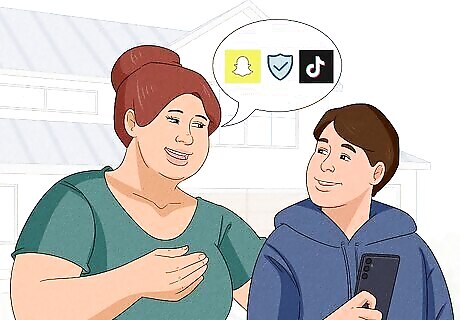
Which is safer: Snapchat or TikTok? No social media platform is completely safe for any user, especially vulnerable kids or teenagers. Both Snapchat and TikTok have safety features to protect underage users, but they also come with risks, so it’s difficult to say which one is objectively safer. Some people believe Snapchat is safer because of the disappearing messages and the absence of “likes” to encourage social media addiction. However, the app has also faced issues like data breaches and frequent sharing of inappropriate content. TikTok is considered safe in some regards because it doesn’t contain malware or steal personal information, but it does still run into scamming issues and user data handling practices.



















Comments
0 comment